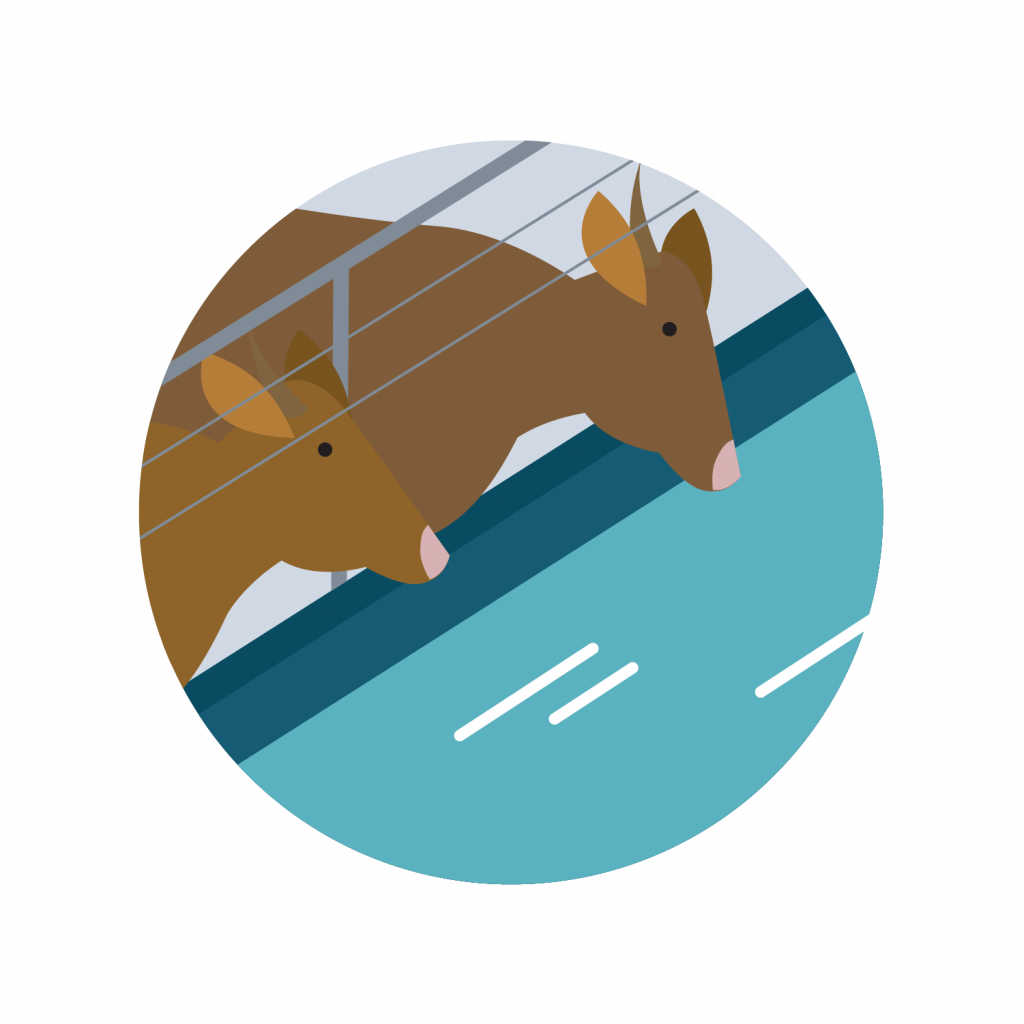Follow the Drop – Feed Lot

Feed Lot
Feedlots are operations where many animals are kept in close quarters. They are focused on feeding animals such as cows, pigs and sheep to prepare them for processing. At these operations, large volumes of water are needed for the animals to drink. Water can be sourced from a river, creek or stream, and in some cases, pumped groundwater is used.
Water quality can be heavily impacted by feedlots due to the high density of animals which results in large amounts of manure and urine accumulating. This waste can run off into water bodies or seep into the groundwater which has impacts on fish and on downstream users. However, guidelines exist that suggest various ways to protect nearby surface water and groundwater from being contaminated. In addition, best management practices (BMPs) are often adopted to minimize the negative impacts feedlots can have on water quality. BMPs may include keeping containment for the manure feedlots far away from natural water supplies, maintaining an appropriate number of animals on site, and locating feedlots near plants that can physically block runoff and take up nutrients.
Despite the best precautions, water near a feedlot operation can still be contaminated. Animal manure contains bacteria (for example, E.coli), salts, and magnesium. It also contains large amounts of nutrients like phosphorous and nitrate, as well as ammonia, potassium and sulphur. High concentrations of nutrients in surface water cause algae blooms and a lack of oxygen. Learn more about the nutrients in our water here.
Fun Fact
Animals to drink: Cattle typically require between 38 and 57 liters per cow per day, but large cattle on hot days may drink as many as 152 liters!
Definition
Contaminant: You may be surprised to learn that water at a commercial car wash is potable! It is also interesting to know that on average, professional car washes use far less water than a self-wash in your driveway.

Where next?
Now that you know all about livestock feedlots, it’s time to choose your next move! You can make your way into the middle area of the Bow River, or you can explore what happens to water during industrial food and beverage processing. It’s your choice!
References and Further Reading
- Alberta Cattle Feeders Association (ACFA), & Alberta Agriculture, Food and Rural Development (AAFRD). (2002). Beneficial Management Practices – Environmental Manual for Feedlot Producers in Alberta. Retrieved from https://www.cattlefeeders.ca/wp-content/uploads/2015/04/Feedlot-Environmental-BMP-Manual.pdf
- Olson, B. M., Miller, J. J., & Rodvang, S. J. (2002). Soil and groundwater quality monitoring under a research feedlot in southern Alberta . Retrieved from https://www1.agric.gov.ab.ca/$Department/deptdocs.nsf/all/irr15472/$FILE/soil_groundwater_quality_monitoring_under_research_feedlot.pdf
